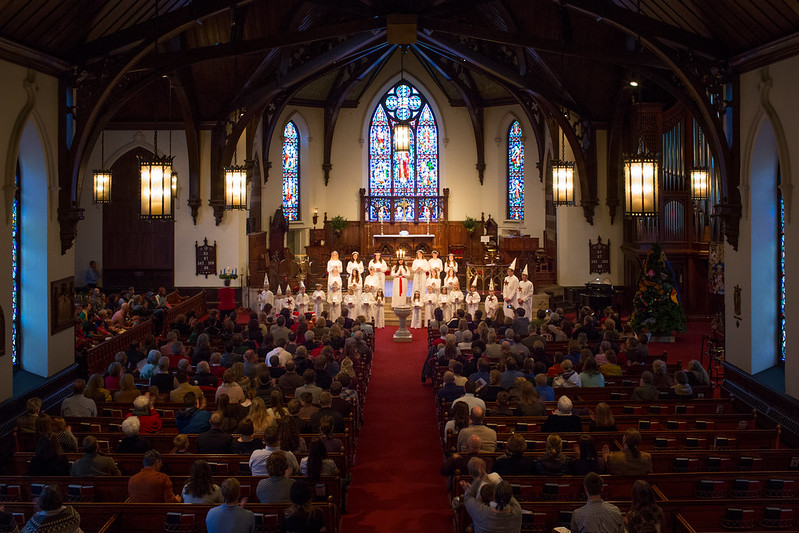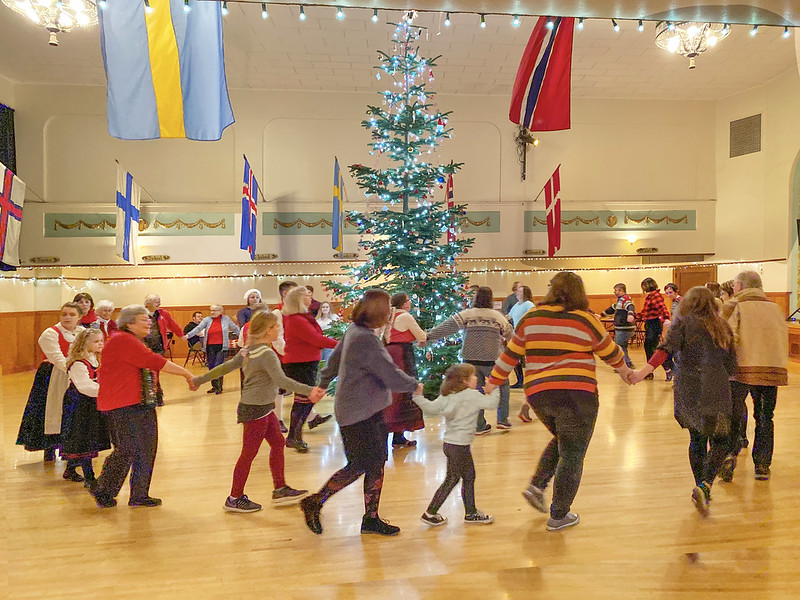Lucia Festival (St. Lucia's Day)
A Festival of Light Illuminating the Nordic Darkness
2025/12/12
The Lucia Festival is Sweden’s festival of light, held in the heart of winter to symbolize hope and unity. In December, as Sweden’s long winter nights reach their darkest, St. Lucia’s Day gently illuminates homes, schools, churches, and public squares across the country. On the morning of December 13th, the aroma of saffron buns and the sound of angelic singing fill the air, as children in white robes, led by “Lucia” with her crown of candles, process through the darkness, bringing hope and comfort. For anyone seeking to experience the warmth of Swedish tradition in winter, Lucia is a festival of beauty, healing, and togetherness.
From bustling Stockholm to small villages, in schools, workplaces, and even on trains, Lucia is celebrated everywhere. Regardless of age or nationality, everyone shares in the light, music, and connection that define this Nordic winter tradition.
Main Attractions
The Lucia Procession
The heart of the festival is the Lucia procession. Before dawn, “Lucia”—chosen by classmates or the community—wears a crown of real candles (or electric lights for safety), a white robe, and a red sash, leading attendants in tinsel crowns and “star boys” in pointed hats. The glow of candles in the darkness and the gentle harmonies of “Sankta Lucia” create an atmosphere that is both sacred and nostalgic.
Key Events
Lucia processions take place in schools, churches, workplaces, and public spaces all over Sweden. In Stockholm and Gothenburg, large parades are even broadcast on TV. At home, it’s tradition for children to wake their parents with coffee and saffron buns, singing Lucia songs as a morning surprise. Choir concerts, charity events, and Lucia Queen contests are also popular.
Costumes and Decorations
The white robe symbolizes purity and light. Lucia’s candle crown is the most iconic, while attendants wear tinsel crowns and star boys don pointed hats. Windows are decorated with candles, lingonberry or fir wreaths, and red ribbons. The scent of beeswax and greenery fills the air, and the warm candlelight softens the winter chill.
Traditional Food & Drink
The signature treat is lussekatter—golden saffron buns whose sweet aroma fills kitchens and bakeries. Gingerbread cookies (pepparkakor), glögg (hot mulled wine), and coffee are also staples. The flavors of sweet saffron, spicy ginger, and warm wine are the taste of Swedish winter comfort.
Cultural and Historical Background
The origins of Lucia Festival blend Christian veneration of saints and ancient Nordic solstice traditions. December 13th was once considered the longest night of the year under the Julian calendar, when darkness and evil spirits were believed to be at their strongest. To ward off the darkness, families would keep fires burning through the night, singing and feasting in a “festival of light.”
Eventually, the story of St. Lucia, a martyr from Sicily and a symbol of light and hope, spread to the Nordic region, and her feast day was established on December 13th. St. Lucia was said to bring light to the darkness, wearing a crown of candles—an image that became the prototype for today’s Lucia procession.
From the 18th to 19th centuries, it became fashionable among aristocratic and urban families for a young woman to play the role of Lucia and serve breakfast to her family. This tradition spread to schools, churches, and communities, evolving into today’s processions of Lucia in white robes, red sashes, and candle crowns, accompanied by attendants and star boys singing as they walk.
Today in Sweden, Lucia is a “symbol of hope and unity,” marking the beginning of the Christmas season. In the cold, dark winter, it’s an important tradition that warms family and community bonds, bringing light and music to the heart of the Nordic winter.
Participant Voices
I visited from Italy and was moved by the Lucia procession at Stockholm Cathedral. The singing was pure and the candlelight was magical. I spoke with a local family and even got to try their homemade lussekatter.
Fun Facts
- Traditionally, Lucia’s crown is made with real candles, but most now use electric lights for safety.
- On Lucia Day alone, over 700,000 saffron buns are eaten in Sweden.
Festival Dates
The Lucia Festival is held every year on December 13th throughout Sweden. For the latest information, check Visit Sweden or official Lucia program websites.
The event schedule is subject to change. Please check the official website for the most up-to-date information.
Information
| Name | Lucia Festival (St. Lucia's Day) |
| Country | Sweden |
| Area | Stockholm, |
| Date | 2025/12/12 |
| Link |
Upcoming Festivals
Dia de la Virgen de Guadalupe Mexico
A Festival Weaving Faith, Fervor, and Mexican Identity
2025/12/11L'Escalade Switzerland
Geneva’s Grand Winter Festival of Courage, Chocolate, and Community
2025/12/12Umkhosi Wokweshwama South Africa
The Zulu First Fruits Festival—A Sacred Celebration of Land, Ancestors, and Renewal
2025/12/12Lucia Festival (St. Lucia's Day) Sweden
A Festival of Light Illuminating the Nordic Darkness
2025/12/15Las Posadas Mexico
The Luminous Quest for Sacred Shelter
2025/12/22Noche de Rabanos (Night of the Radishes) Mexico
A celebration blending art, farming heritage, and cultural traditions
2025/12/23Chant of the Sybil on Majorca Spain
A Medieval Prophecy Echoes Through Majorcan Christmas
2025/12/23‘Hatajo de Negritos’ and the ‘Hatajo de Pallitas’ Peru
A Christmas Festival of Rhythm, Faith, and Afro-Andean Heritage in Peru’s Ica Region
2025/12/24Harbin International Ice and Snow Sculpture Festival China
A Frozen Wonderland Where Art and Adventure Merge
2025/12/24Takanakuy Peru
The Andean Festival of Reconciliation by Fist—How Confrontation Creates Year-End Peace and Bonds


